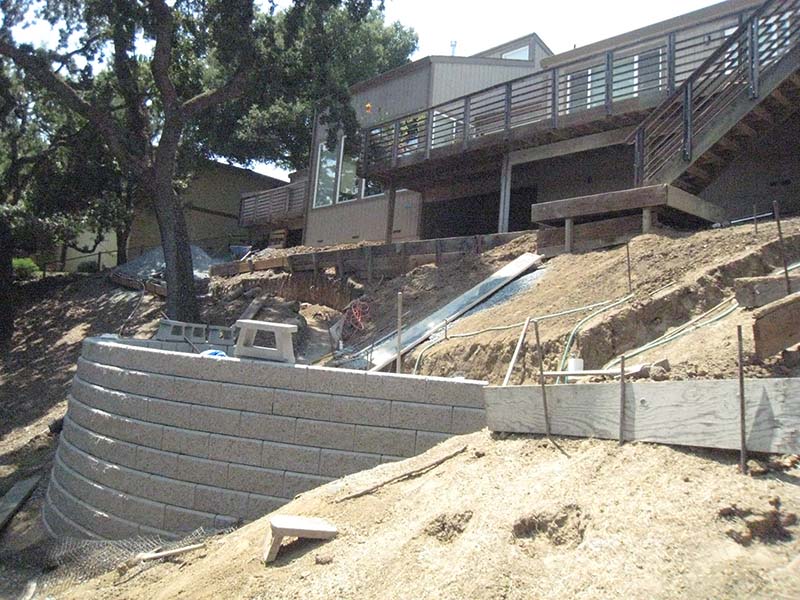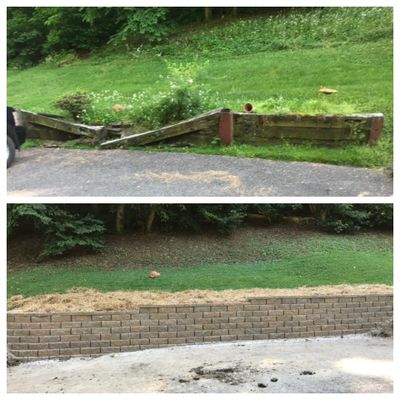About Retaining Wall Inspections
Table of ContentsFascination About Retaining Wall InspectionsSome Known Details About Retaining Wall Inspections Some Ideas on Retaining Wall Inspections You Need To KnowThe Best Guide To Retaining Wall Inspections
A wall with multiple proprietors might have one record sent for all of the proprietors, but each specific owner should send their own filing costs. 00 Late filing: $250 per month, Failure to submit: $1,000 per year, Failing to fix a risky problem: $1,000 per month, prorated everyday If an UNSAFE problem is observed during the assessment, The proprietor should repair the wall surface and/or take suitable steps to secure the safety of the public.
There is no condominium community possession more forgotten than its site wall surfaces. They actually enter into the landscape and also seem to disappear, yet they are essential to the wellness of the community. They are often called preserving wall surfaces or occasionally merely landscape frameworks, but in the sloping insides of Maine or the tough slopes of the coast, these structures allow the extremely existence of some apartment areas.
They can be put concrete, steel, or hardwood. They can be concrete block or rock or brick. They can be very tall or extremely brief. Whatever they are, if they fail, they can be unsafe as well as costly to fix. So, a prudent premises committee should schedule normal examinations as well as keep a log of repair services.
Fascination About Retaining Wall Inspections
Hefty rains or dirt frost motion can have a considerable impact on a keeping wall in a brief time. At the minimum, someone ought to execute an annual evaluation as well as compare those searchings for with the year before. Like us, maturing maintaining walls weaken largely due to gravity. This can be as a result of the extreme dirt packing behind the wall surface or the weight of the wall surface overwhelming the dirt problems below the wall surface.
Cry holes are created to lower this rise in hydrostatic pressure, however weep openings can be obstructed by particles or overwhelmed by the quantity of water. Among the primary steps in the assessment process is to observe the problems of the ground surface areas upslope of the retaining wall surface. Some walls have trench or other kinds of drains pipes to intercept the water while some ground surface areas are created to rapidly drain water over or around the wall surface prior to it can get in the ground behind the wall.

If they lean onward or have indicators of bulging in any type of locations this can show excess back stress or failing in the underlying dirts. Horizontal cracks are usually a lot more significant than upright splits. The very first time this is noted it needs to be given the attention of the center manager or your designer.
Not known Details About Retaining Wall Inspections
Timber wall aspects can rot with age. Any kind of wall can break and also allow vegetation matter to grow from either side of the wall surface. All roots, weeds, or other development must be eliminated when uncovered, as they can apply significant click to investigate stress to the split as well as develop localized weakening of the wall surface.
Missing wall surface rocks or bricks can also be an indicator of serious creating troubles. These missing components might compromise the structural honesty of the maintaining wall surface and also indicate excessive soil stress anticipating future wall bulging, bowing, or bellying either vertically or flat - retaining wall inspections. As the initial preserving wall surface was created for specific loading conditions, any modifications in the general closeness of the wall surface ought to be thought about.
This might consist of a roadway, car park whole lot, or using road salts or deicers near the wall. It likewise includes any type of adjustments to the pattern of surface water drain such as changing from a verdant surface area to a mulched surface. One of the subtlest wall surface failings is the real activity of the slope itself.
Therefore, it is important to record not only the wall but the peripheral locations in the vicinity to guarantee any type of movement unusual is kept in mind and also reported. Specifically keep in mind any type of ground motion at the foot of the keeping wall. A visible wall surface is a secure go to my blog wall.
Retaining Wall Inspections Things To Know Before You Get This
Most of offered SRW systems are dry-cast machine-produced concrete. Traditional SRWs are categorized as either single deepness or numerous depth. The optimum wall surface height that can be built using a solitary deepness unit is directly symmetrical to its weight, width, unit-to-unit shear strength as well as batter for any type of offered dirt as well as website geometry conditions (retaining wall inspections).
7 MPa) for approximately 3 devices with a minimum of 2,500 psi (17. 2 MPa) for a private device. When pop over to this site higher compressive toughness are specified, the examined average internet area compressive toughness of 3 units is called for to equivalent or exceed the specified compressive toughness, and the minimum required solitary device strength is: the specified compressive strength minus 500 psi (3.
4): weight-loss of each of 5 test specimens at the final thought of 100 cycles 1% of its first weight; or weight management of each of four of the five test specimens at the end of 150 cycles 1. 5 % of its first weight. Date of examination: Contractor: Task name: Engineer: Address: Examiner: The SRW layout need to be reviewed for general correspondence with applicable standards.